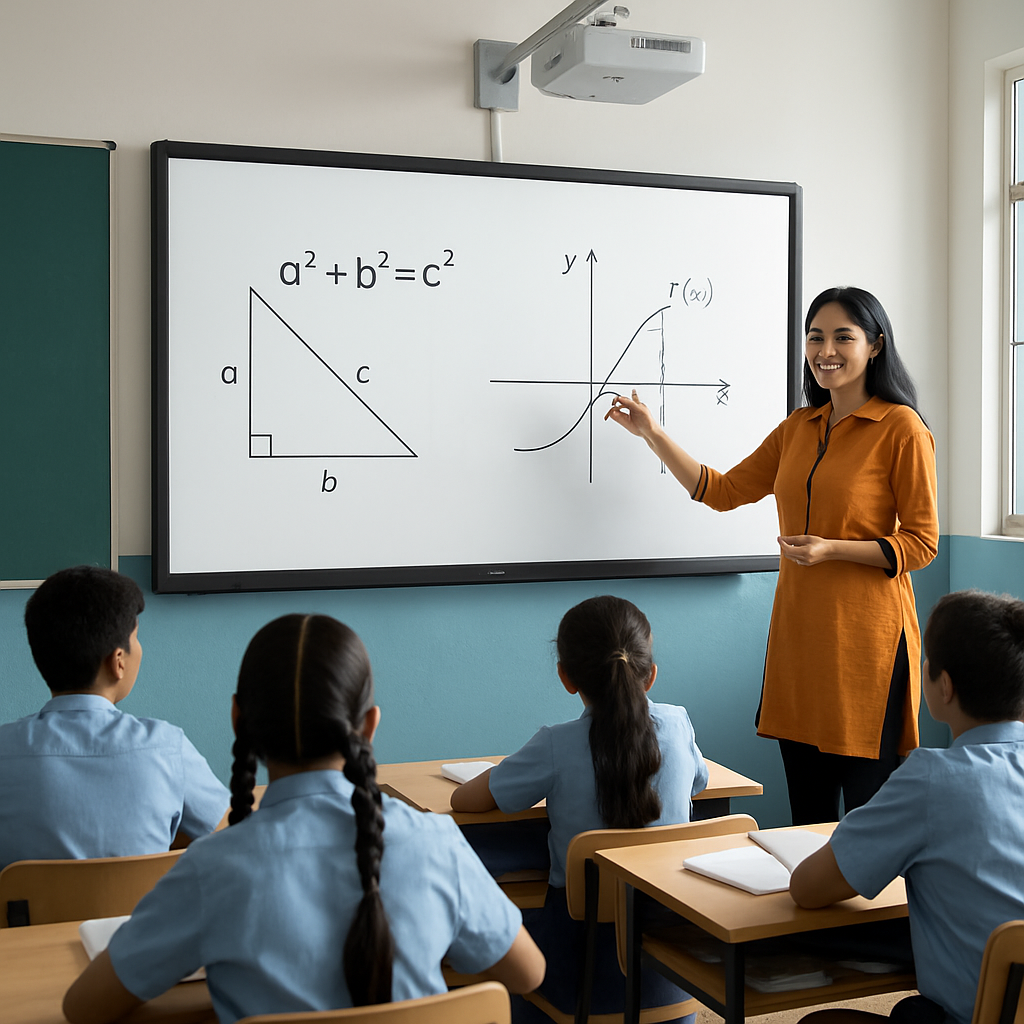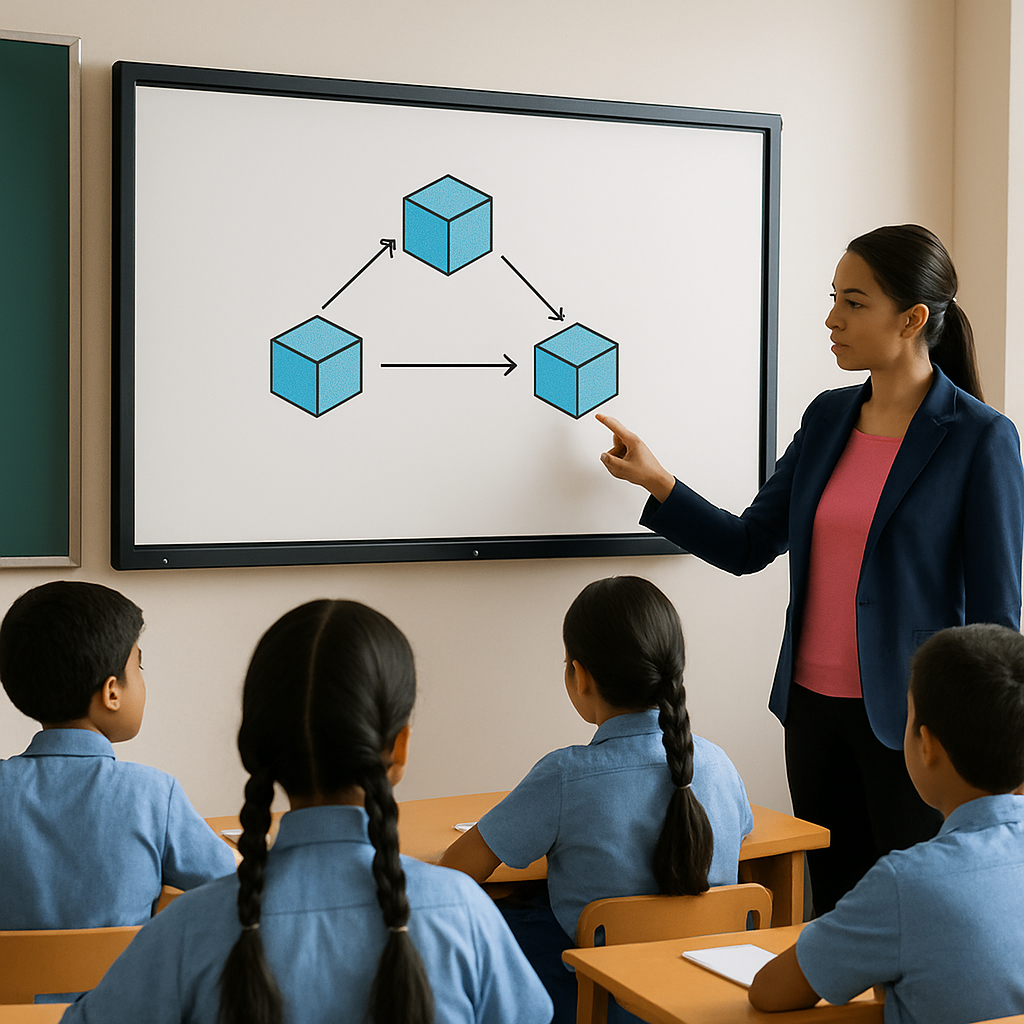Digital Classroom FAQs: Everything Indian Schools Need to Know

Over the last few years, classrooms across India have been shifting gears. Chalkboards are fading, and modern digital classrooms are stepping in, not as a luxury, but as a necessity. K–12 and higher education institutions are looking at smart classroom solutions not just as tools, but as long-term investments in better teaching and learning.
Still, even the most forward-thinking schools have questions. What works in a metro may not work in a tier-3 town. Budgets vary. Infrastructure isn’t the same everywhere. This guide brings together practical, India-focused answers, the kind you’d get from someone who’s actually seen these classrooms in action.
Frequently Asked Questions on Digital Classroom

1. What makes a modern digital classroom different from traditional smart classrooms?
Think of it this way, a smart classroom might just project slides or videos. A modern digital classroom goes further: interactive displays, AI lesson planning, cloud storage, and real-time analytics. It’s less about “showing” and more about “engaging,” where teachers and students can collaborate live.
2. Can a digital classroom work without a constant internet connection?
Yes, in most cases. Schools in smaller towns often store content locally on the system or load lessons in advance. Some smart classroom equipment even allows device-to-device sharing without Wi-Fi. So teaching can go on, even when the network decides to take a break.
3. What are the essential smart classroom equipment items for Indian schools in 2025?
The must-haves haven’t changed much, but the tech has improved. You’ll need an interactive display or projector, a decent audio system, an HD camera for lesson recording, and a reliable PC. Don’t forget power backup, many schools in India still face regular outages.
4. How can digital classrooms support multilingual learning in India?
In a country with over 20 officially recognised languages, inclusivity matters. Modern setups can switch between Hindi, Tamil, Bengali, or English instantly. Some smart classroom solutions even use AI translation, so the same lesson can reach every student in their own language.
5. Are smart classrooms suitable for rural or low-infrastructure schools?
Yes. In fact, some of the most innovative use cases are in rural areas. Compact systems, low-power devices, and offline storage mean teachers don’t have to wait for perfect connectivity. A few schools even run modern digital classrooms on solar power.
6. How does a smart classroom improve teacher productivity?
For many teachers, it’s the small things, automated attendance, preloaded lesson templates, quick access to videos. Over a week, these time-savers add up. Teachers spend less time setting up and more time doing what they’re best at: explaining, guiding, and interacting with students.
7. Can existing classrooms be upgraded to a modern digital classroom setup?
Yes, and it doesn’t always mean replacing everything. Many schools simply add interactive projectors, recording devices, or upgraded audio. If the current whiteboard works, keep it. Technology should adapt to the classroom’s needs, not force the classroom to adapt to it.
8. How should digital classroom equipment be maintained?
It’s mostly about prevention, cleaning displays, updating software, and checking connections. Skipping maintenance often leads to bigger problems later. Schools with a support contract for their smart classroom solutions usually find repairs faster and downtime much lower.
9. How do smart classrooms help in recording and sharing lessons?
Most systems now come with built-in or connected recording tools. A teacher can record a session, store it securely, and share it with absent students. It’s also useful for revision, especially before exams, when students want to revisit tricky topics.
10. What funding or government schemes are available for digital classroom adoption in India?
Several government schemes are available. The ICT in Schools program, PM eVidya, and some state-specific initiatives provide funding. The details change year to year, so administrators should check the latest guidelines before applying. Grants can cover part or even most of the smart classroom equipment cost.
11. How can smart classrooms support special education needs?
Assistive tech has grown fast. Some setups include screen readers for visually impaired students, live captions for the hearing impaired, or adjustable font sizes for dyslexia support. The aim is simple, every student gets access to the same learning experience.
12. Do smart classrooms work for both CBSE and state board curriculums?
Yes. Content libraries are flexible enough to load CBSE, ICSE, or state board-specific material. Many smart classroom solutions let teachers mix standard syllabus material with their own resources, so lessons are compliant and tailored.
13. What training do teachers need to use a digital classroom effectively?
Most schools arrange short workshops covering the basics, turning on the system, using the interactive display, and running quizzes. Confidence grows quickly. By the third or fourth session, teachers often start experimenting with more advanced features on their own.
14. Can digital classrooms integrate with existing school management software?
In many cases, yes. Platforms now link directly to LMS or ERP systems, so attendance, grades, and lesson plans can live in one place. This integration keeps the modern digital classroom connected with the school’s wider digital ecosystem.
15. How can schools measure the ROI of a smart classroom investment?
Look beyond exam scores. Many schools track attendance, participation, and even how often lesson recordings are accessed. When engagement goes up and teacher workloads ease, the numbers tell you the digital classroom is paying off.
Conclusion
Upgrading to a modern digital classroom isn’t about chasing trends, it’s about preparing students for the world they’ll graduate into. The right smart classroom solutions help schools improve engagement, streamline teaching, and make learning accessible to all.
In India, where conditions vary wildly from one district to another, flexibility matters as much as features. Choose solutions that work with your reality today but can grow with your needs tomorrow. That’s how you learn in the future-proof learning.
Discover how the right digital classroom solutions can transform learning, start exploring the future of education today.
Foziya Abuwala
Share
Step Into the future of
Education with Roombr

















